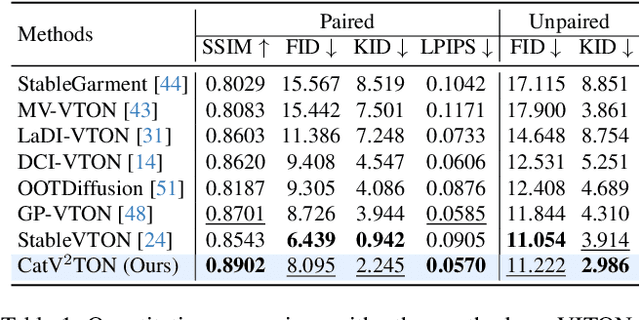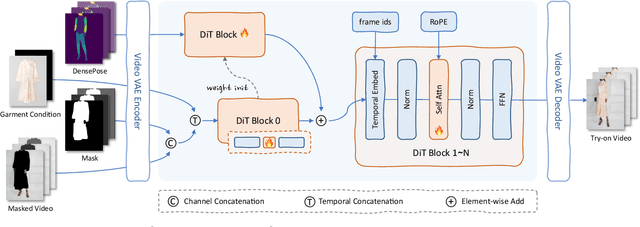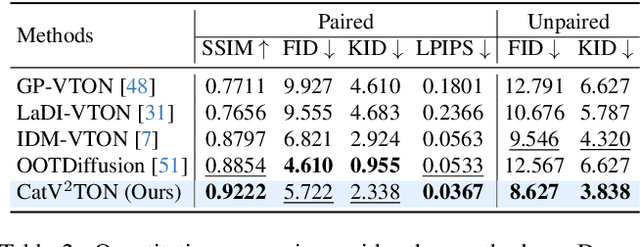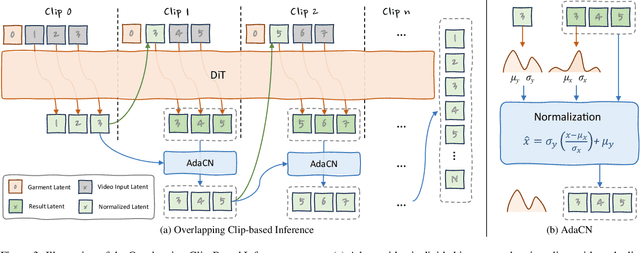Dongmei Jiang
Mirage-1: Augmenting and Updating GUI Agent with Hierarchical Multimodal Skills
Jun 12, 2025



Abstract:Recent efforts to leverage the Multi-modal Large Language Model (MLLM) as GUI agents have yielded promising outcomes. However, these agents still struggle with long-horizon tasks in online environments, primarily due to insufficient knowledge and the inherent gap between offline and online domains. In this paper, inspired by how humans generalize knowledge in open-ended environments, we propose a Hierarchical Multimodal Skills (HMS) module to tackle the issue of insufficient knowledge. It progressively abstracts trajectories into execution skills, core skills, and ultimately meta-skills, providing a hierarchical knowledge structure for long-horizon task planning. To bridge the domain gap, we propose the Skill-Augmented Monte Carlo Tree Search (SA-MCTS) algorithm, which efficiently leverages skills acquired in offline environments to reduce the action search space during online tree exploration. Building on HMS, we propose Mirage-1, a multimodal, cross-platform, plug-and-play GUI agent. To validate the performance of Mirage-1 in real-world long-horizon scenarios, we constructed a new benchmark, AndroidLH. Experimental results show that Mirage-1 outperforms previous agents by 32\%, 19\%, 15\%, and 79\% on AndroidWorld, MobileMiniWob++, Mind2Web-Live, and AndroidLH, respectively. Project page: https://cybertronagent.github.io/Mirage-1.github.io/
Optimus-3: Towards Generalist Multimodal Minecraft Agents with Scalable Task Experts
Jun 12, 2025



Abstract:Recently, agents based on multimodal large language models (MLLMs) have achieved remarkable progress across various domains. However, building a generalist agent with capabilities such as perception, planning, action, grounding, and reflection in open-world environments like Minecraft remains challenges: insufficient domain-specific data, interference among heterogeneous tasks, and visual diversity in open-world settings. In this paper, we address these challenges through three key contributions. 1) We propose a knowledge-enhanced data generation pipeline to provide scalable and high-quality training data for agent development. 2) To mitigate interference among heterogeneous tasks, we introduce a Mixture-of-Experts (MoE) architecture with task-level routing. 3) We develop a Multimodal Reasoning-Augmented Reinforcement Learning approach to enhance the agent's reasoning ability for visual diversity in Minecraft. Built upon these innovations, we present Optimus-3, a general-purpose agent for Minecraft. Extensive experimental results demonstrate that Optimus-3 surpasses both generalist multimodal large language models and existing state-of-the-art agents across a wide range of tasks in the Minecraft environment. Project page: https://cybertronagent.github.io/Optimus-3.github.io/
Cross-DINO: Cross the Deep MLP and Transformer for Small Object Detection
May 28, 2025Abstract:Small Object Detection (SOD) poses significant challenges due to limited information and the model's low class prediction score. While Transformer-based detectors have shown promising performance, their potential for SOD remains largely unexplored. In typical DETR-like frameworks, the CNN backbone network, specialized in aggregating local information, struggles to capture the necessary contextual information for SOD. The multiple attention layers in the Transformer Encoder face difficulties in effectively attending to small objects and can also lead to blurring of features. Furthermore, the model's lower class prediction score of small objects compared to large objects further increases the difficulty of SOD. To address these challenges, we introduce a novel approach called Cross-DINO. This approach incorporates the deep MLP network to aggregate initial feature representations with both short and long range information for SOD. Then, a new Cross Coding Twice Module (CCTM) is applied to integrate these initial representations to the Transformer Encoder feature, enhancing the details of small objects. Additionally, we introduce a new kind of soft label named Category-Size (CS), integrating the Category and Size of objects. By treating CS as new ground truth, we propose a new loss function called Boost Loss to improve the class prediction score of the model. Extensive experimental results on COCO, WiderPerson, VisDrone, AI-TOD, and SODA-D datasets demonstrate that Cross-DINO efficiently improves the performance of DETR-like models on SOD. Specifically, our model achieves 36.4% APs on COCO for SOD with only 45M parameters, outperforming the DINO by +4.4% APS (36.4% vs. 32.0%) with fewer parameters and FLOPs, under 12 epochs training setting. The source codes will be available at https://github.com/Med-Process/Cross-DINO.
Open-Det: An Efficient Learning Framework for Open-Ended Detection
May 27, 2025Abstract:Open-Ended object Detection (OED) is a novel and challenging task that detects objects and generates their category names in a free-form manner, without requiring additional vocabularies during inference. However, the existing OED models, such as GenerateU, require large-scale datasets for training, suffer from slow convergence, and exhibit limited performance. To address these issues, we present a novel and efficient Open-Det framework, consisting of four collaborative parts. Specifically, Open-Det accelerates model training in both the bounding box and object name generation process by reconstructing the Object Detector and the Object Name Generator. To bridge the semantic gap between Vision and Language modalities, we propose a Vision-Language Aligner with V-to-L and L-to-V alignment mechanisms, incorporating with the Prompts Distiller to transfer knowledge from the VLM into VL-prompts, enabling accurate object name generation for the LLM. In addition, we design a Masked Alignment Loss to eliminate contradictory supervision and introduce a Joint Loss to enhance classification, resulting in more efficient training. Compared to GenerateU, Open-Det, using only 1.5% of the training data (0.077M vs. 5.077M), 20.8% of the training epochs (31 vs. 149), and fewer GPU resources (4 V100 vs. 16 A100), achieves even higher performance (+1.0% in APr). The source codes are available at: https://github.com/Med-Process/Open-Det.
Harmony: A Unified Framework for Modality Incremental Learning
Apr 17, 2025Abstract:Incremental learning aims to enable models to continuously acquire knowledge from evolving data streams while preserving previously learned capabilities. While current research predominantly focuses on unimodal incremental learning and multimodal incremental learning where the modalities are consistent, real-world scenarios often present data from entirely new modalities, posing additional challenges. This paper investigates the feasibility of developing a unified model capable of incremental learning across continuously evolving modal sequences. To this end, we introduce a novel paradigm called Modality Incremental Learning (MIL), where each learning stage involves data from distinct modalities. To address this task, we propose a novel framework named Harmony, designed to achieve modal alignment and knowledge retention, enabling the model to reduce the modal discrepancy and learn from a sequence of distinct modalities, ultimately completing tasks across multiple modalities within a unified framework. Our approach introduces the adaptive compatible feature modulation and cumulative modal bridging. Through constructing historical modal features and performing modal knowledge accumulation and alignment, the proposed components collaboratively bridge modal differences and maintain knowledge retention, even with solely unimodal data available at each learning phase.These components work in concert to establish effective modality connections and maintain knowledge retention, even when only unimodal data is available at each learning stage. Extensive experiments on the MIL task demonstrate that our proposed method significantly outperforms existing incremental learning methods, validating its effectiveness in MIL scenarios.
Learning Compatible Multi-Prize Subnetworks for Asymmetric Retrieval
Apr 16, 2025Abstract:Asymmetric retrieval is a typical scenario in real-world retrieval systems, where compatible models of varying capacities are deployed on platforms with different resource configurations. Existing methods generally train pre-defined networks or subnetworks with capacities specifically designed for pre-determined platforms, using compatible learning. Nevertheless, these methods suffer from limited flexibility for multi-platform deployment. For example, when introducing a new platform into the retrieval systems, developers have to train an additional model at an appropriate capacity that is compatible with existing models via backward-compatible learning. In this paper, we propose a Prunable Network with self-compatibility, which allows developers to generate compatible subnetworks at any desired capacity through post-training pruning. Thus it allows the creation of a sparse subnetwork matching the resources of the new platform without additional training. Specifically, we optimize both the architecture and weight of subnetworks at different capacities within a dense network in compatible learning. We also design a conflict-aware gradient integration scheme to handle the gradient conflicts between the dense network and subnetworks during compatible learning. Extensive experiments on diverse benchmarks and visual backbones demonstrate the effectiveness of our method. Our code and model are available at https://github.com/Bunny-Black/PrunNet.
Enhancing LLM Reasoning with Iterative DPO: A Comprehensive Empirical Investigation
Mar 17, 2025



Abstract:Recent advancements in post-training methodologies for large language models (LLMs) have highlighted reinforcement learning (RL) as a critical component for enhancing reasoning. However, the substantial computational costs associated with RL-based approaches have led to growing interest in alternative paradigms, such as Direct Preference Optimization (DPO). In this study, we investigate the effectiveness of DPO in facilitating self-improvement for LLMs through iterative preference-based learning. We demonstrate that a single round of DPO with coarse filtering significantly enhances mathematical reasoning performance, particularly for strong base model. Furthermore, we design an iterative enhancement framework for both the generator and the reward model (RM), enabling their mutual improvement through online interaction across multiple rounds of DPO. Finally, with simple verifiable rewards, our model DPO-VP achieves RL-level performance with significantly lower computational overhead. These findings highlight DPO as a scalable and cost-effective alternative to RL, offering a practical solution for enhancing LLM reasoning in resource-constrained situations.
Optimus-2: Multimodal Minecraft Agent with Goal-Observation-Action Conditioned Policy
Feb 27, 2025



Abstract:Building an agent that can mimic human behavior patterns to accomplish various open-world tasks is a long-term goal. To enable agents to effectively learn behavioral patterns across diverse tasks, a key challenge lies in modeling the intricate relationships among observations, actions, and language. To this end, we propose Optimus-2, a novel Minecraft agent that incorporates a Multimodal Large Language Model (MLLM) for high-level planning, alongside a Goal-Observation-Action Conditioned Policy (GOAP) for low-level control. GOAP contains (1) an Action-guided Behavior Encoder that models causal relationships between observations and actions at each timestep, then dynamically interacts with the historical observation-action sequence, consolidating it into fixed-length behavior tokens, and (2) an MLLM that aligns behavior tokens with open-ended language instructions to predict actions auto-regressively. Moreover, we introduce a high-quality Minecraft Goal-Observation-Action (MGOA)} dataset, which contains 25,000 videos across 8 atomic tasks, providing about 30M goal-observation-action pairs. The automated construction method, along with the MGOA dataset, can contribute to the community's efforts to train Minecraft agents. Extensive experimental results demonstrate that Optimus-2 exhibits superior performance across atomic tasks, long-horizon tasks, and open-ended instruction tasks in Minecraft.
PolaFormer: Polarity-aware Linear Attention for Vision Transformers
Jan 25, 2025Abstract:Linear attention has emerged as a promising alternative to softmax-based attention, leveraging kernelized feature maps to reduce complexity from quadratic to linear in sequence length. However, the non-negative constraint on feature maps and the relaxed exponential function used in approximation lead to significant information loss compared to the original query-key dot products, resulting in less discriminative attention maps with higher entropy. To address the missing interactions driven by negative values in query-key pairs, we propose a polarity-aware linear attention mechanism that explicitly models both same-signed and opposite-signed query-key interactions, ensuring comprehensive coverage of relational information. Furthermore, to restore the spiky properties of attention maps, we provide a theoretical analysis proving the existence of a class of element-wise functions (with positive first and second derivatives) that can reduce entropy in the attention distribution. For simplicity, and recognizing the distinct contributions of each dimension, we employ a learnable power function for rescaling, allowing strong and weak attention signals to be effectively separated. Extensive experiments demonstrate that the proposed PolaFormer improves performance on various vision tasks, enhancing both expressiveness and efficiency by up to 4.6%.
CatV2TON: Taming Diffusion Transformers for Vision-Based Virtual Try-On with Temporal Concatenation
Jan 20, 2025



Abstract:Virtual try-on (VTON) technology has gained attention due to its potential to transform online retail by enabling realistic clothing visualization of images and videos. However, most existing methods struggle to achieve high-quality results across image and video try-on tasks, especially in long video scenarios. In this work, we introduce CatV2TON, a simple and effective vision-based virtual try-on (V2TON) method that supports both image and video try-on tasks with a single diffusion transformer model. By temporally concatenating garment and person inputs and training on a mix of image and video datasets, CatV2TON achieves robust try-on performance across static and dynamic settings. For efficient long-video generation, we propose an overlapping clip-based inference strategy that uses sequential frame guidance and Adaptive Clip Normalization (AdaCN) to maintain temporal consistency with reduced resource demands. We also present ViViD-S, a refined video try-on dataset, achieved by filtering back-facing frames and applying 3D mask smoothing for enhanced temporal consistency. Comprehensive experiments demonstrate that CatV2TON outperforms existing methods in both image and video try-on tasks, offering a versatile and reliable solution for realistic virtual try-ons across diverse scenarios.
 Add to Chrome
Add to Chrome Add to Firefox
Add to Firefox Add to Edge
Add to Edge